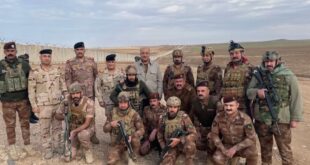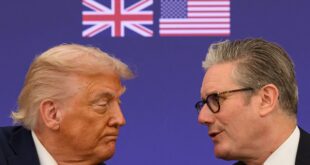As the U.S. military scrambles to meet a mid-January deadline to draw down to 2,500 troops in Afghanistan, a milestone in the conflict has passed almost unremarked: The combined NATO force on the ground now outnumbers the U.S. contingent.
About 13,000 U.S. troops were deployed to Afghanistan as of the end of February, when the U.S. government inked an agreement with the Taliban to withdraw all forces over the course of 14 months if conditions were kept.
There are now about 4,000 U.S. troops deployed to Afghanistan, a senior U.S. defense official said Sunday, and the number is dropping quickly. As of late November, some 11,000 NATO troops remained from several dozen nations — a figure that includes the U.S. contingent. The largest contingents from other nations include Germany, the United Kingdom and Italy. Each had roughly between 900 and 1,000 troops supporting the effort as of June.
“We’re fortunate that the NATO partners have been really amazing in their commitment to the mission and the people of Afghanistan. They want to continue to do the train, advise and assist with us, and they’ve been really clear about that,” said the official, speaking on condition of not being identified. ” … That line about ‘in together, adjust together, out together,’ that’s something that [NATO Secretary General Jens] Stoltenberg has said repeatedly. The NATO partners like the fact that we’re working with them on these issues.”
The official called the fact of having NATO force strength eclipse that of the U.S. in Afghanistan “a historic first.”
The Pentagon announced the new withdrawal timeline in November, following the presidential election. At the time, about 4,500 U.S. troops remained in Afghanistan.
Stoltenberg was quick to express concern with the U.S. withdrawal plan, saying the Taliban had not kept its end of the deal and departure too soon could make the country a haven for terror groups.
“As you know, the United States has announced that it will reduce its presence in Afghanistan. But the NATO mission will remain,” he said in November. “And we will continue to provide support to Afghan security forces.”
With about 1,500 troops still to be withdrawn in a matter of weeks, the senior official said Gen. Scott Miller, commander of U.S. Forces-Afghanistan and NATO’s Resolute Support Mission, felt confident in the military’s ability to meet the set deadline.
“We are on course and speed,” the official said. ” … There’s the constellation of bases and [forward operating bases] that we’ve had over the years. You’re still going to see a constellation; it’s just going to be smaller. … You’ll still have the ability to do the missions that we’ve been doing, though consolidation and realignment may occur to make that just a tighter constellation.”
In NATO’s 71-year history, the U.S. is still the only treaty signatory ever to invoke Article 5, which states that members must consider an armed attack against one ally to be an attack on all. The article was invoked on Oct. 4, 2001, in the wake of the 9/11 attacks, paving the way for a two-decade fight in Afghanistan.
The senior official cited the trip Miller and U.S. Special Representative for Afghanistan Reconciliation Zalmay Khalilzad made to NATO headquarters in Brussels, underscoring NATO’s support of peace talks between the Taliban and Afghan government. With ground rules set, those talks are now set to resume early next year.
As the U.S. military narrows its mission sets in Afghanistan, focusing on counterterrorism and advisory support with a shrinking force, the senior official said NATO has its own goals for its troops remaining in the country.
“We understand where they want to continue to play in what mission space they want to continue to work, and we’re working with them; obviously, some of them have [had] the train-advise-assist relationships a decade or more,” he said. “We want to keep those relationships with the Afghan National Security Forces and the Army. We want those to continue. They’re robust, and we’re working with our partners to ensure that as we adjust together, the missions that we continue to do make sense for those nation partners.”
 Eurasia Press & News
Eurasia Press & News


